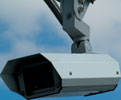

IP is having a highly significant effect on many aspects of the CCTV industry – everything from product development to training and even the types of companies that are getting involved in CCTV installations.
However, although IP is growing steadily, it has not yet transformed the industry. CCTV is still dominated by the traditional analogue devices and transmission, and even when, for instance, DVRs overtake VCRs in annual sales, it will still be some time before IP dominates the scene.
The key to understanding the future of IP in CCTV (IP-CCTV for short) is to recognise its essentially evolutionary nature and that its growth will be determined as much by the evolution of the technology as by the eagerness of the industry to embrace it.
Above all, the CCTV industry is price driven and it is increasing affordability that will eventually determine the success of IP-CCTV.
There are four key issues relating to the future of IP-CCTV:
Product evolution
Despite the wide range of products already available, this sector of the industry is still in its formative stage. Compared with the analogue and digital markets, the number of available product lines is small, their prices reflect their lower sales volumes and it is therefore only on the largest projects and sites that IP-CCTV becomes truly cost effective.
Network availability
The success of an IP-CCTV system depends on the ability of the network to guarantee the timely, fast and affordable delivery of high volume, robust and accurate images.
The capture of evidential quality images depends on this. To this end the capacity of local area networks has increased and fast Ethernet LANs running at 1 Gigabit per second and above are now available and their cost is falling. This increase in capacity greatly reduces the threat of LANs being swamped by CCTV image traffic.
Further, the bandwidth requirements for CCTV images are decreasing. This is partly through improvements in compression technologies and partly because installers and system managers are making better use of the controls that exist to segment and prioritise CCTV traffic to reduce its impact on LAN traffic levels.
The implementation of traffic management techniques will become more widespread as IP knowledge and experience grows in the installer industry. However, this needs to be balanced by measures that protect the evidential integrity of the recorded image. Finally, the advent of wireless LANs (IEEE standards 802.11a (54 Mbps) and 11b (11 Mbps)) provides a cable free method of connecting devices over IP. Wireless LANs are becoming commonplace across industry and commerce and are starting to be deployed for the purposes of CCTV communications.

Past investments
Existing CCTV installations have invested heavily in analogue systems and cabling networks. There is no cost justification at present for the wholesale replacement of existing analogue infrastructures in the vast majority of instances. Instead, the industry will see the growth of hybrid networks that link analogue systems to IP networks via codec devices (that convert the analogue stream to IP) to facilitate a bridge between the old and new worlds. Hybrid networks offer the functional benefits of IP without requiring high capital investment. IP-CCTV adoption will therefore take place in stages. Initially, many analogue CCTV systems will interface with digital video recorders that allow the transmission of images on demand or on alarm over an existing IP network. New IP-CCTV installs or very major upgrades in existing IP-rich environments will piggyback on existing LANs. However, ultimately, we will see the wholesale replacement of analogue local networks on upgrade replaced with LAN communications.
System integration
Finally, demand for IP is being partly driven by end users who desire to integrate all security applications - CCTV, access control and fire - into a single system, running over the same network and under the same management. The benefits that IP brings to CCTV - ease of communication way beyond the limits of a dedicated network, the management flexibility, the functional benefits of being software controlled, and the immediate and long term cost advantages of being part of the huge IT industry - all apply equally to the other technologies. The decision to bring these diverse applications together onto the IP network is straightforward common sense, especially where a company's LAN and WAN already carry all other communications traffic - voice telephony as well as data.
Conclusion
The growth in IP CCTV adoption depends upon a succession of technological evolutions creating a strong business proposition in its favour. The industry faces a tremendous educational challenge to ensure that installers have the knowledge and skillsets required to meet users' needs. And without doubt the nature of the installer community itself is changing as system integrators and others, already well established in the IT industry, spot the commercial opportunities opening up before them. The technical challenge that remains is formidable - network availability is essential to ensure the image is recorded and available, and the quality of the camera and recording system needs to be of an evidential quality.
IP is no overnight revolution. The ultimate decider in this technological evolution is price. Until prices fall significantly, pure IP will remain the preserve of the end user whose budget or philosophy insists upon it. But the industry has been here before - with the digital revolution. IP advocates may have to wait a while still, but they can remain confident that the history of our industry teaches us that the complete arrival of IP-CCTV is simply a question of time.
Ian Fowler is a technical training manager at Norbain SD, UK.
| Tel: | +27 87 802 2288 |
| Email: | [email protected] |
| www: | www.reditron.co.za |
| Articles: | More information and articles about Reditron |

© Technews Publishing (Pty) Ltd. | All Rights Reserved.